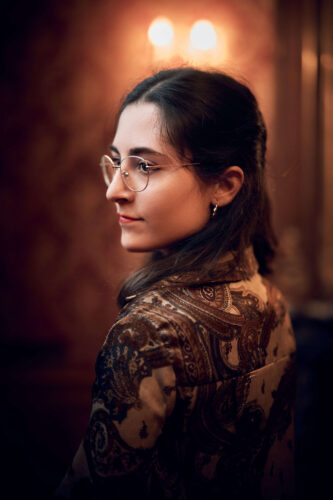The Salish Sea Early Music Festival offered 93 performances on period instruments in 2024 and will present 103 performances in 14 cities in Washington State in 2025 from January through July in ten contrasting programs spanning three centuries (1525 through 1835), and featuring exciting artists from around the United States and abroad. Pictured is Spanish harpsichordist Irene Roldan, winner of the prestigious Bach Prize and an additional special award at the XXXIII. International Bach Competition in Leipzig, Germany in 2022. Please see http://www.salishseafestival.org.
Renaissance to Baroque: the Italian 4-part Canzona

Our first 2025 Salish Sea Early Music Festival program in January in 11 cities around the Salish Sea features four specialists performing on instruments of the renaissance including Vicki Boeckman on renaissance recorders of various sizes, Tina Chancey on tenor and bass viol, Jeffrey Cohan on renaissance transverse flute, and Anna Marsh on dulcian. We’ll provide an in-depth exploration of the Italian four-part canzona which blossomed in print from 1577 through the early decades of the 1600’s, was inspired by French and Flemish chansons of the early 1500’s, and defined to a great extent the instrumental transition between Renaissance and Baroque. It will trace the development of the canzona from 1529, when commercial music printing was just beginning in Europe, through 1636 by which point more “baroque” stylistic forms had emerged. Canzonas by Florentino Maschera (1582), Floriano Canale (1600), Giovanni Dominico Rognoni Taegio (1605), Antonio Troilo (1606), Giovanni Gabrieli (1608), Girolamo Frescobaldi (1608), Giovanni Antonio Cangiasi (1614), Giacomo Biumi (1624), Nicolo Corradini (1624), Giovanni Buonamente (1636) and others are to be included along with the earlier French and Flemish songs that inspired them, and published for instruments specifically in 1529, 1577 and 1588, including Clement Jannequin’s “Song of the Birds”, published specifically for instruments. All will be performed on renaissance recorders of various sizes, renaissance transverse flute, renaissance viols of various sizes and renaissance dulcian or bassoon of the 16th century which create an unusual blend and provide a distinct character to each of the four entertwining musical lines.

